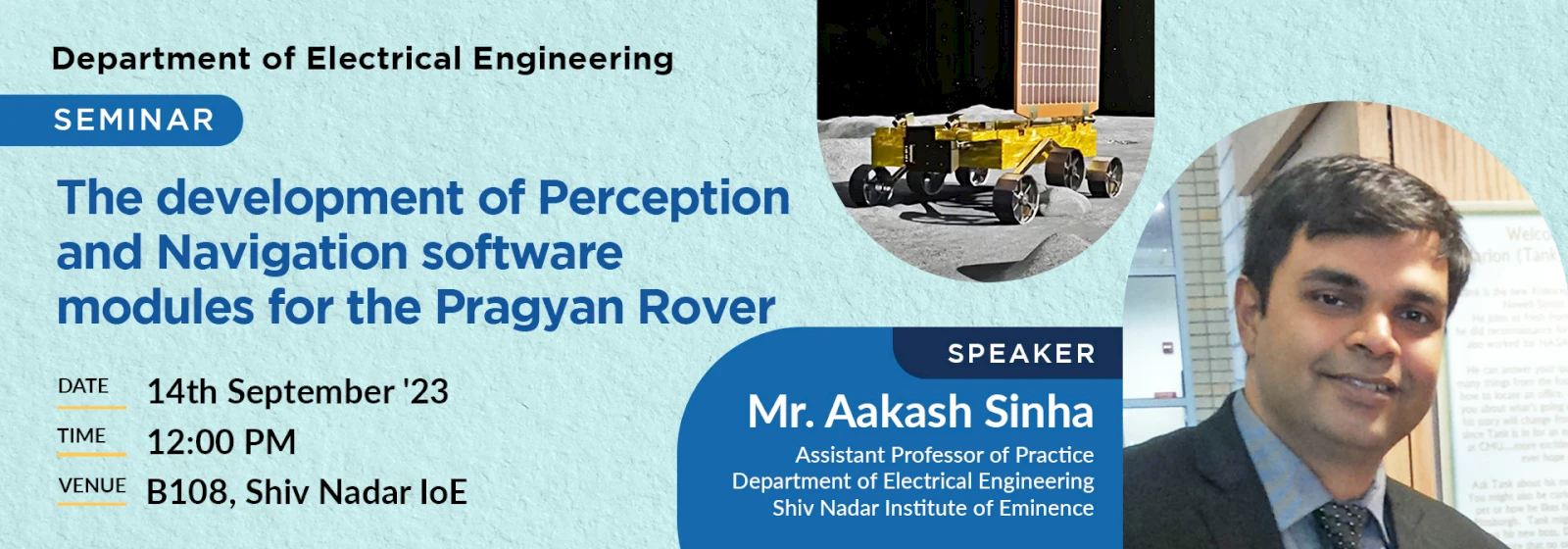Department of Electrical Engineering organizes a seminar on 'The Development of Perception and Navigation Software Modules for the Pragyan Rover'
The development of Perception and Navigation software modules for the Pragyan Rover included:
1. Generating 3D point cloud from stereo imagery
2. Building a 3D model , DEM and DTM
3. Making accurate measurements of distance height and depth
4.Algorithms for automatic intrinsic and extrinsic calibration of the stereo pair.
5. Algorithms and software for localisation and path planning for the rover as it moves on lunar surface
6. Deep learning based Object identification modules for identifying typical objects likes rocks and small craters
7.User interface and API for ISRO for interfacing with pragyaan hardware.
The project was very challenging because of the following reasons :
1. There is no colour, little texture and shades on moon this makes 3D generation very challenging
2. We had to generate 3D with just two images due to limited processing power.
3. Entire operation was to be fully automated as downloading every image from moon took 10 min
During this talk a walkthrough of the above challenges and how they were solved would be presented
Aakash Sinha, Asst. Prof. of Practice at the Shiv Nadar Institute of Eminence’s Department of Electrical Engineering, was Instrumental in the Chandrayaan mission’s ‘Pragyan’ lunar rover's software development. Awarded the MIT TR35 Innovator distinction, a finalist position in the DARPA Robotics Grand Challenge and a Department of Science and Technology’s gold medal. A graduate of Carnegie Mellon with a Master’s in Robotics under Dr Raj Reddy, he earlier worked at Lockheed Martin and iRobot. He is also a founder at Nikhil Kamath backed startup Omnipresent Robot Tech. At SNIOE, he offers courses in Deep Learning and Robotics. He also represented SNIOE at NASA Mars Rover Challenge 2023, and has lead SNIOE teams to win World Robotics Championship (Drone Category) and Smart India Hackathon (Drone Hardware).

Share this: